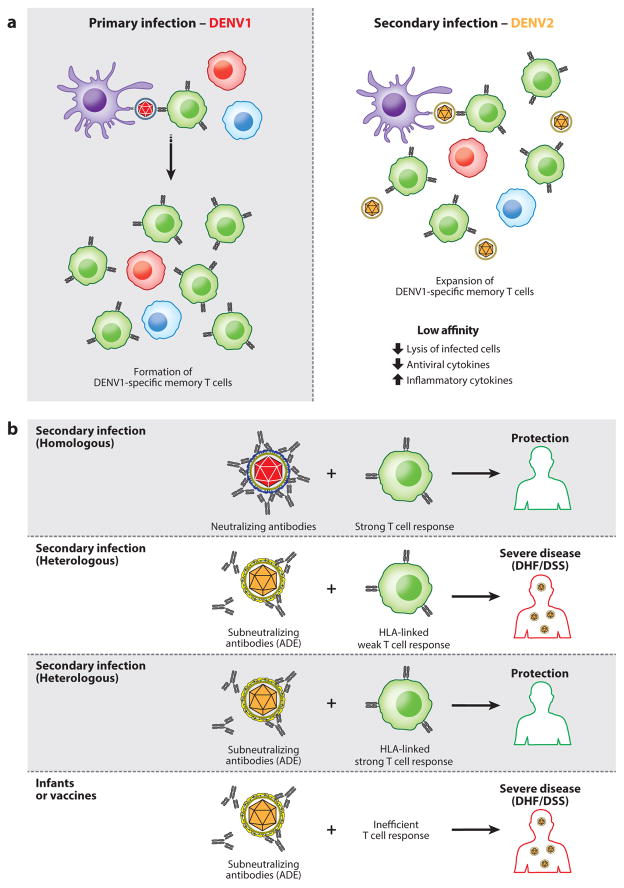Figure 4.
T cell original antigenic sin and scheme of outcomes resulting from combined humoral and T cell immunity. (a) T cell original antigenic sin postulates that T cells exposed to a first virus undergo appropriate clonal expansion. However, upon new infection and presentation of cross-reactive viral antigen, the previously expanded T cell populations that have low affinity to the currently infecting virus are activated. This results in a failure to adequately kill infected cells and leads to aberrant, pathogenic immune responses. (b) Evidence better supports a model in which T cells are generally protective against primary infection and secondary infection even under antibody-dependent enhancement (ADE) conditions. However, T cell responses may be attenuated by host factors such as HLA.

